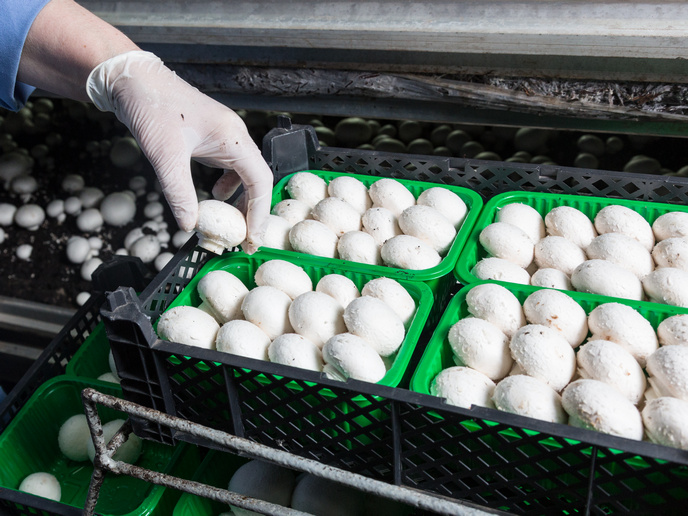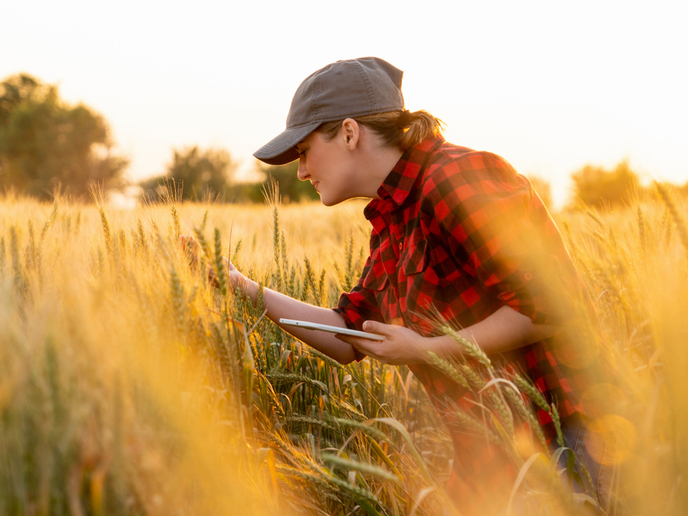Applying robotics to the delicate skill of mushroom picking
While global mushroom demand continues to grow, many producers are struggling to keep up. A key factor is the cost of labour. “Picking mushrooms requires precision, dexterity and sensitivity,” explains SoftGrip project coordinator Matteo Cianchetti from the Sant’Anna School of Advanced Studies in Italy. “For these reasons, it is hard to automate. Trained workers are therefore still necessary, but not always easy to find.”
Automating the mushroom picking process
The aim of the SoftGrip project was to ease the burden on producers by finding new ways to automate the picking process. The project team began by identifying key issues that make mushroom picking such a challenge. “One of the things we had to deal with was the space constraint,” says Cianchetti. “Growing facilities tend to follow globally uniform standards, so any system we designed had to comply with the current space available.” Another challenge was developing a gripper that would gently interact with the mushroom, but also grasp it firmly enough. For this, soft materials such as silicones were used. All the gripper parts were designed to be food-contact safe, low maintenance and recyclable for low environmental impact. “Mushrooms are grown on shelves,” explains Cianchetti. “In order to cover the entire shelf, a motorised system was built to move the gripper into position. Advanced artificial intelligence (AI) algorithms were then used to recognise, distinguish and generate a 3D reconstruction of the mushrooms. This information was used to perform the movement necessary to correctly uproot the mushroom.”
Testing the prototype mushroom picking technology
The project next carried out two evaluations. The first one in Athens focused on testing and optimising the prototype robotic system, while the pilot in Dublin was designed to test the technology in real growing conditions. “The first stage ended quite nicely, with multiple successful pickings,” remarks Cianchetti. “This enabled us to proceed to the second and more challenging phase.” Here the team faced two unforeseen problems. First, shipping the equipment from Athens to Dublin resulted in damage, requiring some repair work. Second, the mushroom bed was much higher than expected, which required modifications to restore the robot’s movements. “These problems, together with the limited testing time we had, limited the amount of testing we were able to accomplish,” notes Cianchetti.
Positive impact on food production
Nonetheless, the prototype exceeded expectations in terms of reliability, ability to identify mushrooms and robustness in real growing conditions. “We were also able to identify possibilities for improvement, especially in terms of mechanical design and sensing capabilities,” adds Cianchetti. “The execution time was consistent, ranging from 50 to 140 seconds for each mushroom, but we believe the speed – which was kept low to ensure functionality – could be increased. The other advantage of a robotic system of course is that it can operate 24/7.” Cianchetti also foresees further research into AI, and notes that the consortium partners are still in contact. “Our hope is that some of the ideas developed during the project will now be followed up,” he says. “Many of our results have been published and are openly accessible. In this way, our results can have a real impact on improving food production.”
Keywords
SoftGrip, mushroom, AI, robotics, farmers, food, algorithms







